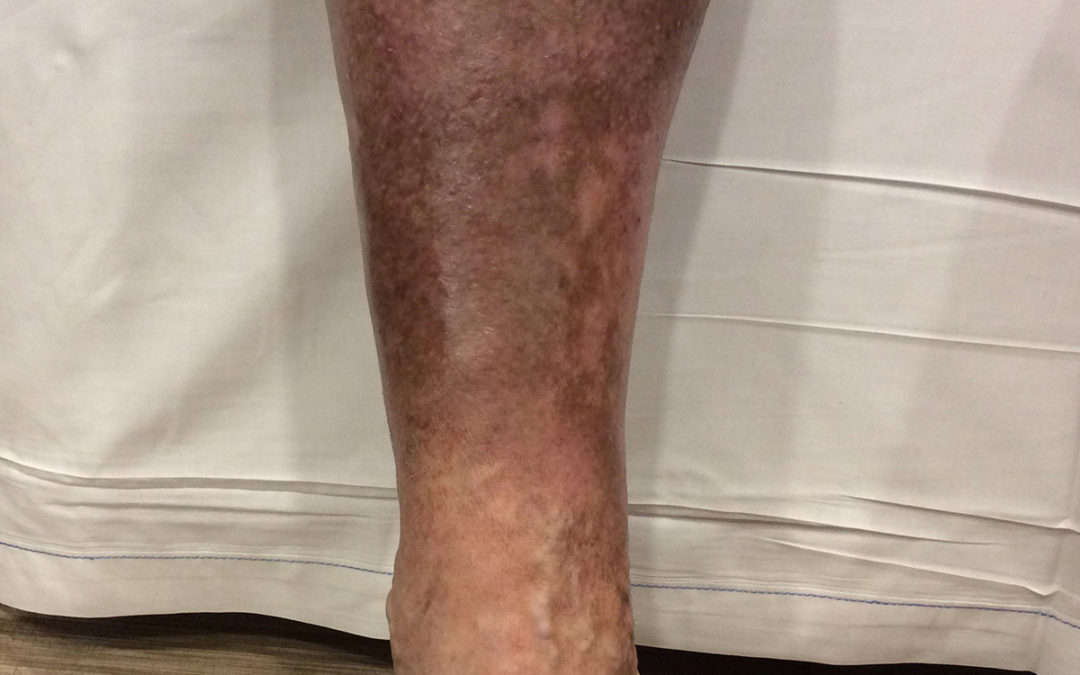Reddish, brown discoloration of the lower leg is often due to Chronic Venous Insufficiency, and this discoloration is called Venous Stasis Dermatitis. Oxygenated blood is pumped to the body by the heart. It is returned to the heart for re-oxygenation by a system of tiny, one-way valves within the leg. When those valves cease to function properly, blood flows backward and pools in the veins of the lower leg causing the veins to bulge or varicose. This condition, diagnosed by ultrasound imaging, is called Chronic Venous Insufficiency (CVI). CVI also causes spider veins and legs may appear swollen, feel heavy, and ache, or itch. As vein disease advances untreated, pressure from blood and fluid that collects in the lower leg begins to seep into the skin causing a brown, reddish appearance. Over time, this skin becomes very susceptible to injury, and a minor cut can develop into an ulcer that is slow or resistant to healing and susceptible to infection. Many people who have lower leg wounds caused by venous disease have suffered for years with unhealed wounds because they are misdiagnosed. They receive treatment for their wounds only (the symptom), but the source (diseased veins) is not addressed. If you or a loved one has untreated varicose veins, is showing signs of lower leg discoloration, or has a wound on the lower leg that will not heal, it is a good idea to seek evaluation and treatment from a vein specialist.

